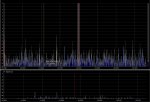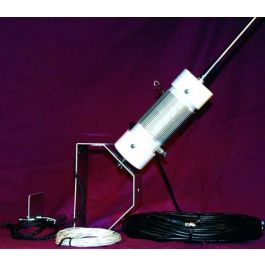Start with a goal. With whom are you trying to communicate, where are they at, where are you at, what information are you trying to transmit and receive? Mission dictates gear.
For "local" comms, you're looking at VHF/UHF. That's line-of-sight, although keep in mind that use of elevation and proper antennas can make line-of-sight pretty damn far. Since the wavelength is short, so are the antennas, so you can easily clamp something to a patio railing or hang it out a window. For portable use, get 1 or 2 good handhelds for yourself and a partner, and then a fistful of something cheap (like the Baofeng UV-5R) to hand out to allies (like maybe some people throughout your apartment building, or around the block). For mobile use, there are plenty of good 12VDC units, and you can use a simple magnetic-mount antenna that is only ~18" long - not large enough to attract attention, and no need to punch any holes in nice cars.
For distance, you're looking at HF bands, and those are where antennas typically get to be some combination of large and/or complex. Proper operation is also typically trickier than just dialing a particular frequency and hitting a button.
If you want to get up and running quickly, go for your Technician ticket (I found a local group that did a day-long study/test session with no prior study required) so you're legal. A Tech ticket in hand beats a plan to get your General or Extra. Find a decent handheld and a portable/mobile; the latter becomes a workable base station with the addition of a 12V power supply. Buy a mag-mount or bumper-clamp antenna for your Willys, and run 12V into the cab if you don't already have a good source of power. Get cheap handhelds into the hands of friends and allies. Figure out how much antenna you can install in your apartment, and keep in mind that receiving on HF bands is easier than transmitting (read: smaller antennas) if you're simply looking at ways to pick up shortwave broadcasts. If you can get to a piece of ground in an elevated position, portable antennas such as those from Super Antenna can get you frequencies down to the 80m band with less than 10lbs of gear in a backpack.
Unless you've got a secure location in which to hole up for the long haul, be careful about how you allocate your gear. An expensive base station, tower, and antennas don't do you any good if you need to hit the road. Stuff that runs off 12V will be most valuable in most SHTF situations. Don't start worrying about low-likelihood/high-severity events like EMPs until you've got the most probable events covered (severe weather with a lengthy power outtage, urban riots, need to evac due to fire or NBC event, etc.). Think about flexibility; a good handheld that can run off multiple sources of DC power and a handful of RF connector adapters goes quite a ways towards communicating in a variety of situations.
Sweat the details. Stuff like feedline matters, quality of connections matter, lightning suppression matters. A fancy rig with improper connections isn't a good use of limited funds. Get used to spending $100 on a set of tools so you can strip wire that is $1/ft and then crimping on SO-239 connectors that are $7/each.
Go poke around the Fieldcraft section here. There has been a ton of solid information shared in the past; some of it was a bit tough to extract and that unfortunately degrades its value somewhat. Get the basic ARRL books. Get some basic gear, play around with it, figure out what you don't know. It's really easy to feel foolish after dropping a couple grand on a base station that doesn't fit your needs, but a quality dual- or tri-band handheld probably won't ever feel like a waste of money.




